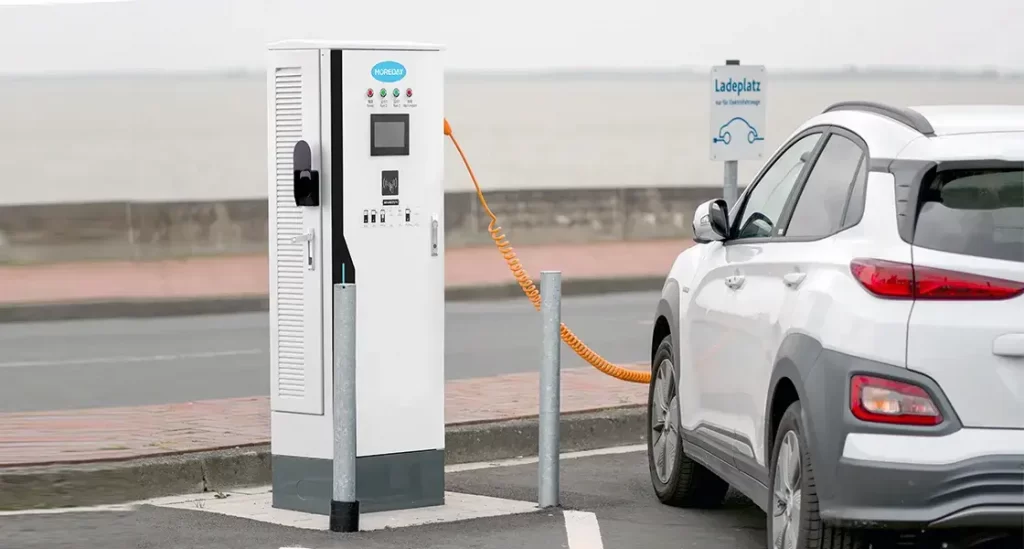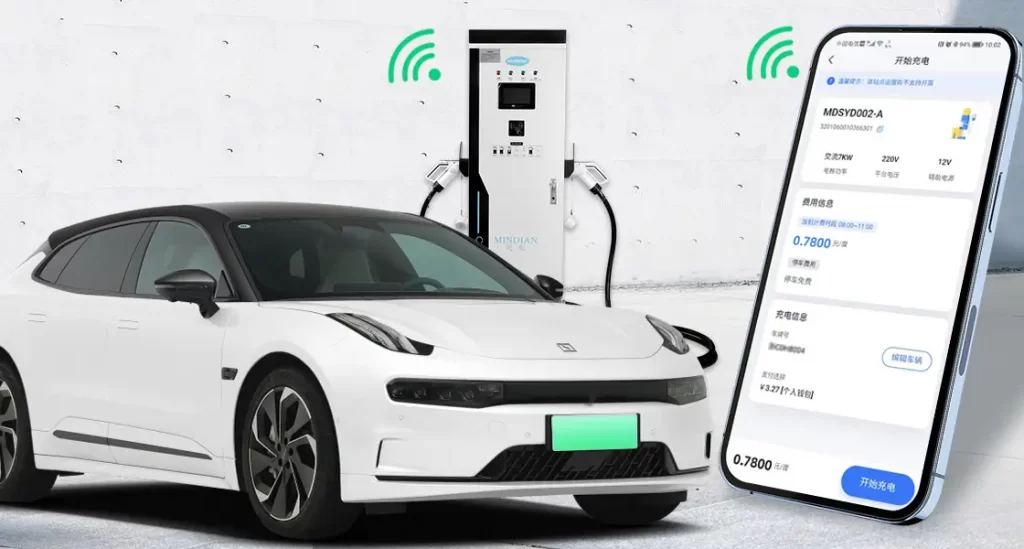Many entrepreneurs are considering entering the EV connect charging stations industry, pondering the potential profitability of this venture. Let’s delve deeper into various aspects of electric vehicle charging stations and analyze whether this business can indeed be profitable
The global electric vehicle charging station market was valued at approximately $17.59 billion in 2021 and is expected to surge to $111.9 billion by 2028. This substantial growth is driven by increasing sales of electric vehicles, supportive government incentives, and innovative business models including advertising and data services.
Despite the high initial costs of setting up an electric vehicle charging station, the long-term profit outlook is increasingly positive. Considering these factors, operating an electric vehicle charging station is likely to be a profitable business for many entrepreneurs.
Table of Contents
ToggleWhat are EV charging stations?

Electric vehicle (EV) charging stations are also ubiquitous in our daily lives. They are infrastructure that can charge the batteries of electric cars, buses, and even electric bicycles.
The charging speed of these charging stations varies depending on the type of charger, from slow chargers that may take several hours or even more than ten hours to fully charge a car, to fast chargers that can fully charge a car in an hour.
Is the EV charging station business profitable?
Yes, the business of operating an electric vehicle (EV) charging station can be profitable. Several factors contribute to the potential profitability of this business:
Growing market
As the adoption of electric vehicles increases, the demand for EV charging stations is also growing. The global EV charging station market was valued at approximately $17.59 billion in 2021 and is expected to grow to $111.9 billion by 2028. This growth is primarily driven by increasing sales of electric vehicles and improving environmental regulations.
Government incentives
Many governments around the world offer incentives for the construction of EV charging infrastructure, including tax breaks, grants, and other financial benefits. These incentives can significantly reduce the initial costs and operating expenses associated with setting up and maintaining charging stations.
Revenue sources
In addition to charging fees, EV charging stations can generate revenue through various other channels. This includes partnerships with retail businesses, advertising, and selling data related to energy use and consumer behavior.
Technological advances
Advances in charging technology have reduced charging times and increased efficiency, continuing to improve the business case for investing in EV charging stations.
While the initial cost of setting up an EV charging station can be high, careful planning, strategic site selection, leveraging government incentives, and tapping into multiple revenue streams can lead to a successful and profitable operation.
What is the EV charging station franchise cost?

The cost to start an electric vehicle charging station franchise varies widely and depends on a variety of factors, including the type and size of the station, the franchise model, the location, and associated fees. Here is a breakdown of the costs involved:
Franchise fee
The initial franchise fee ranges from $20,000 to $50,000. This fee permits you to operate under the franchise brand and typically includes initial training and support provided by the franchisee.
Equipment costs
- Level 2 chargers: These are more commonly used for commercial purposes and cost between $3,000 and $7,000 per station.
- DC fast chargers: These are more expensive, costing about $35,000 per charger, reflecting their faster charging capabilities and higher power requirements.
Installation costs
Installation costs can vary widely, but are generally considerable, as they involve extensive electrical work, compliance with local regulations, and sometimes construction work. For a Level 2 charger, installation costs can range from $1,000 to $5,000, while DC fast chargers can be much higher due to the complexity and additional infrastructure required.
Operational costs
Operational costs include ongoing expenses such as electricity, maintenance, subscriptions to charging management software, and (if the property is not owned) possible rent or lease payments. These costs need to be managed carefully to ensure profitability.
Return on investment
Despite the higher initial costs, the profit potential of EV charging station franchising is significant, especially in strategic locations with high EV traffic. Revenue can be generated through charging fees, and many franchisees also allow dynamic pricing models to maximize revenue during peak times.
Franchising EV charging stations is a structured way to enter this growing industry, backed by an established brand and proven business model. However, potential franchisees should conduct thorough due diligence and consider local market conditions and competition before investing.
What are the profits of different types of charging stations?

The profitability of EV charging stations can be analyzed in detail by considering the different charging types available (Level 1, Level 2, and DC Fast Charging), each of which has unique operating dynamics and profitability factors.
Level 1 charging
Level 1 charging is the slowest type of charging and uses a standard household outlet (120V) and typically provides approximately 4-5 miles of range per hour of charging. This type of charging is primarily used in private residences, employee parking lots, or hotels where vehicles are parked overnight.
Profitability factors:
- Low Installation Cost: Minimal infrastructure is required, typically requiring only an outdoor power outlet.
- Low Revenue Utilization: Due to its slow charging speed, Level 1 is rarely the first choice for public charging stations and does not typically contribute significantly to revenue streams.
Level 2 charging
Level 2 charging uses a 240V power source, provides approximately 12-80 miles of range per hour, and is more common in public and commercial settings.
This type of charger is the preferred location for Level 2 chargers in shopping centers, public parking facilities, workplaces, and high-density residential areas with shared parking spaces due to the faster charging time of Level 2 chargers compared to Level 1 chargers.
Profit factors:
- Moderate Installation Cost: Higher than Level 1 due to the need for specialized equipment and electrical upgrades.
- Higher Utilization and Revenue Potential: Better for public use, allowing operators to charge by session or by minute/hour of usage.
- Dynamic Pricing Capability: Rates can be adjusted based on demand, time of day, or electricity costs to maximize profits.
DC fast charging (DCFC)
DC Fast Charging is the fastest type of charging currently available, using a 480V+ system that provides approximately 3-20 miles of range per minute, making it ideal for long-distance EV travel.
Because DCFC can provide service quickly, locations along major highways, large transportation hubs, or urban centers with high vehicle turnover are ideal.
Profit factors:
- High Installation and Operation Costs: Requires extensive power infrastructure and high energy consumption.
- High Revenue Potential: Essential for road travel and high-demand urban areas, where premium pricing can be achieved.
- Energy Demand Management: Managing utility peak demand charges is important, which can significantly impact operating costs.
Industry data:
DC fast charger installation costs range from $40,000 to over $100,000, and operating costs can vary depending on energy prices and maintenance requirements.
According to industry reports, fast chargers in strategic locations such as highways can achieve utilization rates of over 50%, significantly increasing profitability.
Other factors that influence the profitability of each category:
- Government incentives: Reduce upfront costs through tax credits, rebates, and grants.
- Partnerships: Partnering with property owners, businesses, or governments can reduce operating costs and increase foot traffic.
- Renewable energy integration: Using solar or wind power to generate electricity can reduce long-term energy costs and attract environmentally conscious consumers.
- Real estate considerations: Choosing a location with high visibility and accessibility can significantly increase utilization.
Each type of EV charging station meets different user needs and market segments. Strategic selection of charging type and careful consideration of location, pricing strategy, and cost management are critical to maximizing the profitability of the EV charging station business.
Market demand and growth
Electric vehicle sales continue to set records and are expected to continue to grow significantly. This surge requires an equal growth in charging infrastructure to avoid bottlenecks and ensure efficient service availability.
To keep up with the rapid growth of electric vehicles, significant investments in both fast and conventional charging stations are needed. Governments and private companies are planning to significantly increase the number of available charging stations by 2030.
The market analysis forecasts that the electric vehicle charging station market will grow tenfold by 2030 when it is expected that there will be approximately 27 million electric vehicles on the road in the United States, which will urgently require more charging solutions to meet the increased demand.
Where can I wholesale or buy charging piles?
If you are planning to buy charging piles wholesale, you can check out the MOREDAY website. They offer a variety of types of charging piles, including Level 2 charging piles and DC fast charging piles. Whether it is for commercial or personal use, you can find the right product.
MOREDAY’s charging piles are designed with ease of use and durability in mind, ensuring that they can meet the needs of different environments and frequent use. Through their website, you can learn more about the technical specifications, prices, and purchase options of each charging pile so that you can choose the charging pile that best suits your needs.
FAQ
How long does it take to pay back the money you put into operating a charging station facility?
The payback period for an electric vehicle charging station is typically between three and seven years, depending on factors such as the type of charging station, installation and operating costs, pricing strategy, location selection, and market demand.
Selecting high-traffic locations for installation, adopting a reasonable pricing strategy, and taking advantage of government subsidies and tax incentives can help speed up the payback process.
What is the revenue model for EV charging stations?
The revenue of EV charging stations depends on the charging level and pricing strategy. For example, Level 2 chargers usually charge between $0.20 and $0.30 per kWh, or $1 to $2 per hour, and a typical 4-hour charge can generate about $6 in revenue. For DC fast chargers (DCFC), the charge may be between $0.30 and $0.60 per kWh, and a 25 kWh fast charge can generate about $12.50 in revenue, and the charge may be higher during peak hours.
In addition, subscriptions or memberships can provide stable monthly revenue. For example, a monthly membership fee of $30 with 100 users would generate $3,000 in monthly revenue. Revenue is also affected by factors such as the location of the charging station, market demand, and electricity costs, so regular market analysis and adjustment of pricing strategies are critical to optimizing revenue.
Related reading: Should I Charge My EV Every Night?

